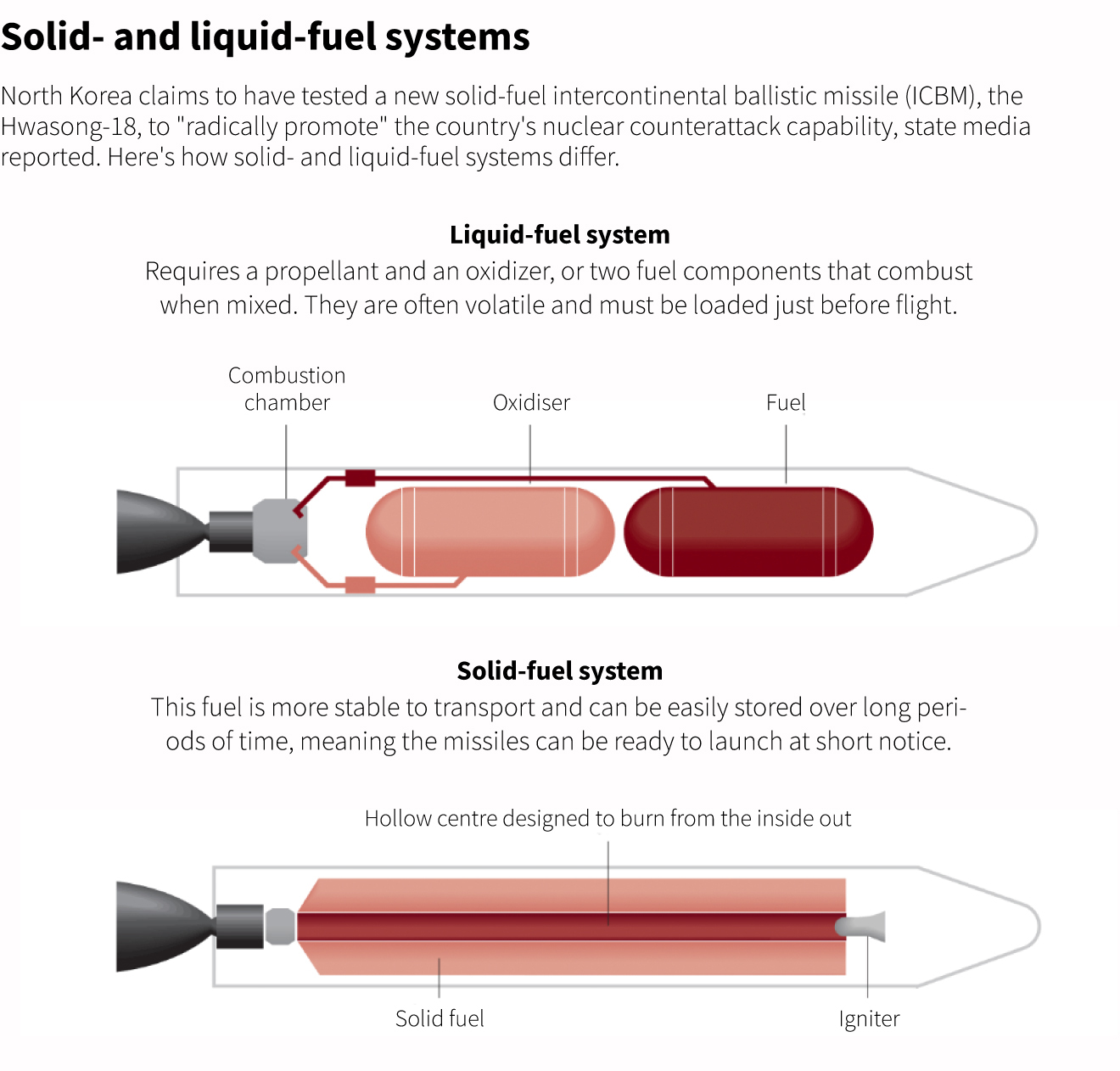- Home
- Prelims
- Mains
- Current Affairs
- Study Materials
- Test Series
Solid-fuel technology and North Korea
North Korea says it has tested a new solid-fuel intercontinental ballistic missile (ICBM), its first known use of the propellant in a longer-range projectile, as it seeks the capability to launch with little preparation.
North Korea said the development of its new solid-fuel ICBM, the Hwasong-18, would "radically promote" its nuclear counterattack capability.
South Korea's defence ministry sought to downplay the testing, saying the North would need "extra time and effort" to master the technology.
Panda said the North could face difficulties ensuring such a large missile does not break apart when the diameter of the booster becomes larger.
Although the Hwasong-18 might not be a "game changer", he said, it will most likely complicate the calculations of the United States and its allies during a conflict.
"The most important interest the United States and its allies have is to reduce the risks of nuclear use and escalation stemming from North Korea's possession of these weapons"'.
- Solid propellants are a mixture of fuel and oxidizer.
- Metallic powders such as aluminum often serve as fuel.
- Ammonium perchlorate, which is the salt of perchloric acid and ammonia, is the most common oxidizer.
 Use
Use
- Both fuel and oxidizer are bound together by a hard rubbery material and packed into a metal casing.
- When solid propellant burns, oxygen from the ammonium perchlorate combines with aluminum to generate enormous amounts of energy and temperatures of more than 5,000 degrees Fahrenheit (2,760 degrees Celsius), creating thrust and lifting the missile from the launch pad.
Who has Solid-Fuel Technology?
- The technology can be dated back to fireworks developed by the Chinese centuries ago.
- The United States developed more powerful propellants.
- Soviet Union fielded its first solid-fuel ICBM, the RT-2, in the early 1970s, followed by France''s development of its S3, also known as SSBS, a medium-range ballistic missile.
- China started testing solid-fuel ICBMs in the late 1990s.
- South Korea had already secured "efficient and advanced" solid-propellant ballistic missile technology.
Solid .vs. Liquid fuels
- Liquid propellants provide greater propulsive thrust and power but require more complex technology and extra weight.
- Solid fuel is dense and burns quite quickly, generating thrust over a short time.
- Solid fuel can remain in storage without degrading or breaking down.
- Whereas liquid fuel has a common issue with storage.
Benefits associated with using Solid Fuel Missiles
- Solid-fuel missiles are easier and safer to operate, and require less logistical support, making them harder to detect and more survivable than liquid-fuel weapons.
- It does not need to be fuelled immediately ahead of launch.









 Latest News
Latest News
 General Studies
General Studies